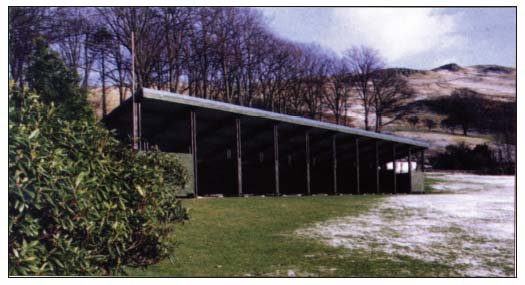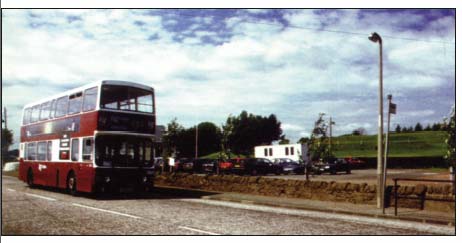Planning Advice Note 43: golf courses and associated developments
Planning Advice Note (PAN) 43 identifies the planning issues associated with golf courses and related development.
This document is part of a collection
golf related planning issues
Ancillary Development - Commercial Considerations
42. Fewer than a quarter of recently proposed golf course projects with ancillary development are within the areas of unmet demand identified by the SSC. This provides some evidence not only that developer interest lies primarily with the related development rather than the golf course but also that proposals are chiefly in areas where there is no overriding demand for additional golf course capacity. While in some cases ancillary development can assist in offsetting costs, the SSC suggests that:
"inexpensive pay-as-you-play golf course provision close to population centres may be at least as viable as major golf, leisure and residential complexes, and may contribute more to the development of the sport in Scotland."
Source: SSC Information Digest FP5
43. Partnerships between developers and local authorities could share the initial capital outlay until the courses are open and earning income. The key however is to keep costs to a minimum. There are many new golf courses where quality has not been compromised by low capital outlay. Competing uses for development land, particularly in central Scotland and the green belts, make the prudent funding of low cost golf courses an even more important aspect in the overall package.
44. Where a golf course proposal forms part of a mixed development with another use such as an hotel, a conference centre, a country club, villas or chalets, or with a combination of these, the developer may suggest that only the complete package will be viable. For example, where the restoration of a country house is involved, developers may claim that the other developments are required to raise the capital for the repairs of the house. In these circumstances there is a risk that the site will become overdeveloped to the detriment of the very qualities which attracted the proposal in the first place. Developers and planning authorities should consider the other mechanisms available to secure the objectives of the repair of great houses, through the use of repairs notices, grant-aid, tax concessions available to the owners of outstanding buildings and land, or by conversion to form a number of dwellings, with owners sharing the use and upkeep of the policies.
45. The costs of providing access, drainage and other infrastructure which are borne by developers rise steeply the more complex the development becomes. Some initial costs can be avoided by retaining natural Iandforms and indigenous planting which are the foundations for a good golfing environment. High initial capital costs may in turn appear to be balanced by revenue generated by sales from associated housing development, the scale of which may outweigh the central function of the golf course. The importance of the golf course amongst the other elements of the proposal will therefore be of material interest to the planning authority. The use of a suspensive condition or a Section 50 agreement may in some circumstances be the most practical means of satisfying both parties on matters such as development phasing, course management and achieving continuing public accessibility to golf by ensuring the provision of pay-as-you-play courses rather than those with restricted membership.
46. Golf course operating costs can also vary considerably according to the number of rounds, the course design and the initial investment. In England the Eastern Council for Sport and Recreation advise that for a course taking say 50,000 rounds per annum, developers should not economise on initial layout or drainage, as maintenance, management and even rebuilding costs are consequently high.
Grant Assistance
47. Local Enterprise Companies operate a range of assistance schemes to encourage economic development and environmental improvement. While they have no direct responsibility for the provision of sports and recreation facilities, they may be able to provide advice and assistance related to proposed developments where this is consistent with and complementary to their activities.
48. Grants and loans are available from the Royal & Ancient Golf Club for certain projects. Further financial assistance for golf developments may be available through the Foundation for Sport and the Arts.
Practice Facilities
49. Practice grounds or putting greens also meet the needs of golfers and may only require 1-2 ha of land. The SSC operates a purpose-designed model golf practice area at the Scottish National Sports Centre, Inverclyde. It features driving bays, a variety of different greens and conditions. The SSC hopes that it will stimulate the development of more practice facilities. In Scotland, a quarter of all clubs have no facilities of this kind.

50. Driving ranges can also contribute to overall provision either operating independently or in association with new courses. They are normally more intensive land uses than golf courses with different visitor patterns and potentially higher levels of traffic generation. The additional buildings or the galleries, especially if they are 2-tier, can appear intrusive unless sensitively sited. Ranges may need high fencing and generally require floodlighting to permit evening use. Urban or urban fringe rather than open countryside sites may be preferable as they are closer to their markets and reduce the need for excessive travel, provided they satisfy other planning objectives. Driving ranges in green belts should only be sited where they do not make an unacceptable impact on landscape setting.
Transport and Parking
51. The capacity of the surrounding roads needs to be capable of accommodating anticipated flows. The standard of the rural road network varies widely and prior consultation with the appropriate roads authority may identify the best means of accommodating increased traffic. It would be desirable to locate driving ranges and golf courses close to bus routes. It is estimated that at the weekend peak hours (07.00-09.00,12.00-1 3.00 and 16.00-17.00) as many as 50 cars per hour may leave and enter an 18-hole course but this is only a rough guide. Other surveys indicate that broadly half of all golfers have arrived by 10.00 but summer weekday peaks can be around 16.30-17.30. Over a third of people practising at driving ranges arrive after 18.00.

52. Parking provision for an 18-hole golf course should be between 100 and 120 spaces, based on a maximum peak summer day use of 250 golfers with each staying five and a half hours and each car arriving with an average 1.4 golfers. In many cases, and for most days of the year 100 parking spaces should be quite adequate. Where new courses are likely to provide for tournaments, provision should be made at the planning application stage for the large number of cars likely to be attracted to the events in order to avoid local traffic congestion. Such occasional extra parking provision need not be surfaced. Additional parking will be required for any ancillary developments in accordance with the planning authorities' parking standards.
Contact
There is a problem
Thanks for your feedback